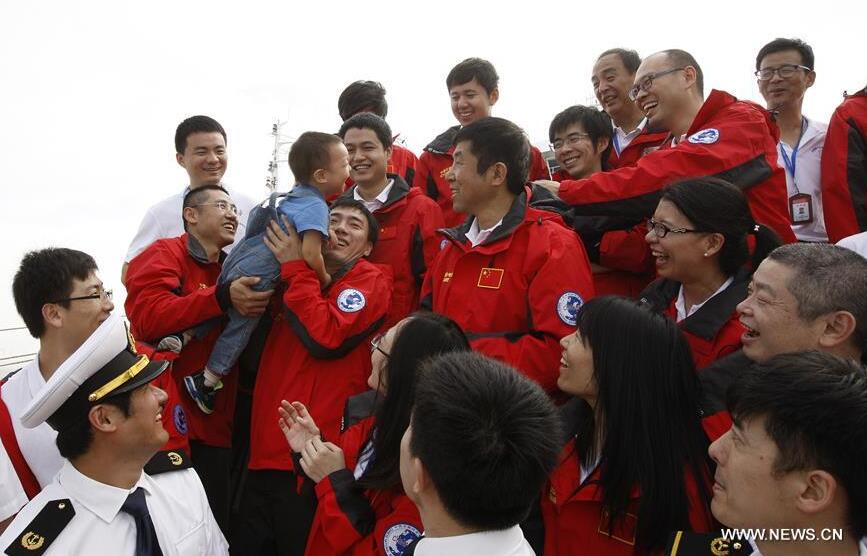The development of, and services offered by, new-generation bullet trains will benefit the government’s promotion of the country’s high-speed railway technology in the international market, according to officials at China Railway Corp.
![A new Fuxing bullet train running between Tianjin and Beijing, prepares to leave the capital.[Photo by Wang Zhuangfei/China Daily] A new Fuxing bullet train running between Tianjin and Beijing, prepares to leave the capital.[Photo by Wang Zhuangfei/China Daily]](http://images.china.cn/attachement/jpg/site1007/20171010/f44d307d90cc1b466f2211.jpg) |
|
A new Fuxing bullet train running between Tianjin and Beijing, prepares to leave the capital.[Photo by Wang Zhuangfei/China Daily]
|
In a statement published on its website in September, the State-owned railway operator said it plans to design and export bullet trains based on the CR400 Fuxing, or “rejuvenation”, model, the nation’s newest fleet of trains.
The statement added that the trains will meet the requirements of users overseas and will be competitive in the global market.
As prime examples of China’s world-leading expertise, the CR400AF and CR400BF models were put into operation on the Beijing-Shanghai High-speed Railway in late June, running at about 300 kilometers per hour.
On Sept 21, the speed was increased to 350 km/h on the 1,318-km-long line, becoming the world’s fastest operational wheeled rail vehicles. Their deployment cut the journey time between the municipalities by 60 minutes, reducing the trip to four and a half hours.
Their development began in 2012 under the Ministry of Railways, the predecessor of CRC, which aspired to manufacture bullet trains with “Chinese standards”.
Before Fuxing came into service, trains running on the country’s high-speed rail network had been designed and built in accordance with a range of standards in use overseas.
The new models have longer service lives than their predecessors – 30 years compared with 20 – and their streamlined designs allow lower power consumption and more space for every passenger, according to Zhang Bo, a designer at the China Academy of Railway Sciences.
Zhang said the overall design and all of the key parts – such as traction equipment, brakes and the control software – were developed by Chinese engineers.
The trains are equipped with advanced monitoring systems that provide autonomous deceleration in the event of emergencies or malfunctions.
He Huawu, chief engineer at CRC, said the level of technology and the capabilities of the CR400 series meet the highest standards in the world, and will prove major advantages as China seeks to export homemade high-speed railway equipment.

![A new Fuxing bullet train running between Tianjin and Beijing, prepares to leave the capital.[Photo by Wang Zhuangfei/China Daily] A new Fuxing bullet train running between Tianjin and Beijing, prepares to leave the capital.[Photo by Wang Zhuangfei/China Daily]](http://images.china.cn/attachement/jpg/site1007/20171010/f44d307d90cc1b466f2211.jpg)